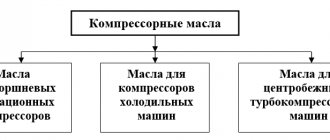You can use different chainsaws in your work - for three to four thousand rubles, purchased in a hypermarket at a discount, or for 15-20 - from an official dealer. Their quality, performance and resource will be different. But there is one component without which it is generally impossible to use this tool. Without the correct fuel mixture. Seemingly simple instructions turn out to be not so clear in reality, and an incorrectly prepared mixture can cause dire consequences.
Why mix oil and gasoline?
Most people are used to handling four-stroke engines.
Even in motorcycles, this type of engine is now more common than two-stroke engines. The requirement in itself to pour oil into gasoline does not lead to an understanding of the process. After all, in conventional car engines there is a whole system that prevents the mixing of oil and fuel. The whole trick is in the design features of low-power internal combustion engines with two cycles of operation. They are very simple in design and do not have an oil pan and a pump that would pump liquid lubricant to the right places. The crankcase contains only the cylinder and the crank mechanism with the crankshaft.
To ensure lubrication, the designers took a different route: they arranged the channel system in such a way that the fuel not only penetrates the combustion chamber, but also washes the moving components on the back side of the piston. Since the lubricating properties of gasoline are clearly insufficient to reduce friction, oil is added to it. By the way, due to these features, the rings on the piston are exclusively compression rings, there are no oil scraper rings.
Basic rules of application
Two-stroke chainsaw oil is most often created on a mineral base. Less often it is synthetic or semi-synthetic. According to technology, oil for 2-stroke chainsaw engines is mixed with fuel before filling the tank.
Table of proportions
Pouring lubricant directly into the tank is also practiced, but this is not the most reliable way. Especially if the tank was completely empty. In this case, there is a possibility that gasoline will partially enter the system without lubrication. And the engine will run dry for some time.
The gasoline/oil ratio for chainsaws is strictly determined by the saw manufacturer. In some cases, oil manufacturers indicate their proportions. This is typical of expensive synthetic lubricants. And the gasoline/oil ratio in this case increases towards fuel.
If, when using a lubricant, it is discovered that a wet oil deposit remains on the spark plug, and dirty waste drips from the exhaust pipe, these are clear signs of incomplete combustion or the use of low-quality lubricant. It is necessary to reconsider the choice of motor oil for a chainsaw and the proportion of its use.
Proportions of gasoline and oil
Very little oil is required for normal engine operation. Its quantity is always determined as a percentage, since the gas tank of saws can have different capacities. In addition, many operators prepare the mixture with a small reserve, especially if there is serious work to be done. After all, one tank of modern tools, despite all its efficiency, is rarely enough for more than 1 cubic meter of firewood.
1/50
This is a standard due to the high quality of manufacturing of modern engines. Characteristic of most modern saws made in German, Swiss, American, Japanese and Italian production. In a word, all saws released no more than 10 years ago by world-famous brands - Husqvarna, Shtil, Oleo-Mak, Makita, Echo and others - will require exactly this proportion. You can find out about this from the instructions.
However, many purely Chinese saws are also influenced by improved processing and assembly technologies. Thus, many saws of domestic brands assembled in the Middle Kingdom also work on a 1:50 mixture. For example, on recently released Bison models, the proportion marking label appeared in the form of a cardboard flag directly on the handle of the starter cord, apparently for those who do not like to look at the instructions.
1/40
This ratio is often called “break-in”. This means that after purchasing a new saw, you will need to pour a more oil-rich mixture into the gas tank. At this time, the moving parts of the cylinder-piston group are ground in; the process requires a larger proportion than usual. After burning a couple of tanks in a gentle mode, you can switch to the ratio recommended by the manufacturer.
Also, the 1/40 proportion is generally accepted by some manufacturers, for example, in Partner chainsaws. Considering that there is slightly more oil here than in the previous version, a slight excess of the norm will not harm any engine. When using high-quality fuel and lubricants, another question arises - the price of rather expensive consumables.
1/25
Today it is considered obsolete. Widely used in domestic chainsaws of old designs like Druzhba or Ural. Today it can still be found in some Chinese chainsaws of the “no-name” class or branded by retail chains. However, every year the number of such products is decreasing and constitutes the most budget and low-quality niche of gas-powered tools. In addition, for such products it does not matter how expensive and high-quality oil is poured into the gas tank - the engine life is still shamelessly short in any case.
Important Terms
The power plants in chainsaws are internal combustion engines, fueled by certain brands of gasoline diluted with the required parts of oil.
Knowledge and strict adherence to the composition of a combustible mixture is the key to long-term operation and productive use of small-scale mechanization units.
The main fuel component is AI grade. It is not recommended to use below or above 92 octane. Optimal for many types of mechanized sawmills, domestic or foreign made.
The ideal ratio of gasoline and oil for a chainsaw:
- increases the productivity of the unit;
- increases service life;
- creates money savings.
The instructions attached to the purchased goods indicate the consumption rates of fuel and lubricating fluid. Violation of the requirements leads to loss of power and premature wear of the internal combustion engine. The truth was obtained through research methods, empirically in our country and abroad.
Consequences of incorrect dosage
Many chainsaw users don't pay enough attention to proportions. 50 grams more or less - does it matter? But in vain: often the cause of saw malfunctions is operation with an incorrectly prepared fuel mixture. Moreover, you can make a mistake or intentionally violate the ratio either up or down.
If there is a lot of oil...
There is an opinion among chainsaw owners that “you can’t ruin an engine with oil.” But it’s not for nothing that they come up with the necessary parameters for the finished mixture. Excess oil can also be harmful and cause inconvenience. Indeed, despite the improved combustion characteristics without residue, some hydrocarbons still turn into soot and carbon deposits. At low concentrations there are few of them, but if you enrich the mixture with oil twice as much as the norm, then coking will result. This is especially dangerous for cheap mineral oils that do not have a “washing” effect.
It is also highly likely that you will find oil in the air filter when the carburetor is overfilled. The candle will also be sooted - it will need to be cleaned, rinsed and dried. Also, vapors from unburned oil will settle in the muffler, and during intensive operation they will burn out, forming a trail of soot and sparks.
After such refueling, almost all the insides of the saw will have to be thoroughly cleaned and rinsed. The funniest “surprise” will be the “dying” of the piston rings - but this is only in the case of systematic abuse of oil overflow and work under heavy load.
...or little
“Greed” when preparing the fuel mixture has ruined more than one piston.
This is where it really is better to be “overcautious” than to be “underdressed.” After all, if in the first case you are faced with a thorough “washing” of the unit, then in the second you will have to change the CPG, and this is generally unprofitable on many saws, but for others it costs quite a lot of money. Conclusion: saving is pointless. If there is not enough oil, the piston begins to rub strongly against the cylinder, since at high temperatures gasoline is too fluid to serve as a lubricant.
Sad result: scuff marks on the piston, ruined saw engine. If the owner comes to his senses in time, he will find that the piston and cylinder are cast in a beautiful blue. No master can give a guarantee how long these will last.
Fuel selection
Which fuel to choose for a chainsaw is not an idle question; the success of the unit’s operation directly depends on it. According to existing canons, good gasoline for a chainsaw is considered to be not leaded, but high-octane from a trusted manufacturer. The cleaner the fuel, the better. If gasoline has been stored in a canister for a year and a half, this will negatively affect the operation of the device, so the substance should be prepared just before starting work.
It is recommended not to use low-octane fuel and to completely exclude inexpensive oils of dubious quality. You should not use leaded fuel; it significantly reduces the life of the power plant.
It is important to ensure that the fuel does not contain alcohol or any additives that could interfere with the functioning of the power plant. Experts are still debating whether 95 or 92 is better. The first has more stable detonation indicators, but most often they still use 92. The reason is simple: questions often arise about the 95, it contains a large number of different additives that have a bad effect on the operation of the saw engine. Microdetonation occurs (piston impulse in the opposite direction), which occurs at almost every revolution of the crankshaft. If the octane number is even higher (98), then the micro-shocks will become even more intense.
The consequences of incorrect gasoline on the quality of operation of the unit can only be negative:
- The mechanism will be difficult to start.
- The power will be minimal.
- Parts will wear out more intensively.
Expert opinion
Kuznetsov Vasily Stepanovich
You should not fill your chainsaw with gasoline from the bottom of the canister. The wire channels of the carburetor have small diameters; if they become clogged, this will cause the chainsaw to break down. All fuels should be carefully filtered before use. For domestic saws "Ural", "Druzhba" the fuel grade "80" is suitable.
Recommendations for ingredients
Even a chainsaw owner who observes the proportions down to the gram can harm his tool if he uses low-quality or inappropriate components. The general recommendation is to use special fluids.
Two words about oil...
Oil for two-stroke engines is produced primarily for gasoline-powered household tools. It is always painted in some bright color - blue, green, red, pink. This is done so that when added to gasoline, it becomes clear that this is a ready-made mixture that can already be poured into the gas tank. Large manufacturers, such as Stihl, have several types of oils that differ in color.
If you have a saw that recommends oil from the same manufacturer, follow this recommendation if you are a beginner. Only through trial and error do experienced “pillars” find the very oil that suits them best.
Do not pour car motor oil into a two-stroke engine! Although the Internet is full of reviews from those who say “Lew, and the flight is normal,” believe me: they have not yet shown the piston of their instrument to the master. And the smoke from the muffler is unlikely to please you.
... and about gasoline
To say that in oil-producing and refining Russia gasoline is mostly of poor quality means repeating the obvious. You can get caught with bad fuel not only at nameless gas stations, but also at large gas stations with a big name. High-quality gasoline is very important for modern high-tech chainsaws - it allows them to work with maximum efficiency and minimal wear. The general requirement today is to use gasoline with an octane rating of at least 92. It has optimal performance for chainsaws.
It was possible to pour 76 gasoline into old Soviet units. Today you shouldn’t do this even with cheap Chinese saws - you will only speed up its “death”. It is also not recommended to go to the other extreme - pouring 95 or even 98 into an expensive instrument, thinking that it will be better for it.
Arkady, 39 years old, Moscow, consultant at a petroleum equipment store
We recommend pouring 92-octane gasoline into two-stroke engines, purchased from trusted places, the quality of which you have no doubt about. Buyers come and ask: the better the gasoline, the better the saw? Why not pour 95 then? After all, more advanced cars require only it.
Answer: most of the Russian 95 gasoline is the same 92, but with additives that reduce detonation. This parameter is not important for a chainsaw; it needs the purest gasoline possible, since additives are completely unnecessary. Therefore, the logic is simple: pure 92 is better than the more expensive 95, but with unnecessary additives.
— Arkady, 39 years old, Moscow, consultant at a petroleum equipment store
What happens if you pour waste into a chainsaw?
If you don’t want your chainsaw to fail at the wrong moment, use only high-quality fuels and lubricants. Mixing waste with gasoline is prohibited. The reasons for this are the following factors:
- The viscosity of the material is different, so the grinding is not capable of providing effective lubrication of rubbing parts and mechanisms
- The waste contains small particles of metal and shavings, which, if they enter the tank, will cause clogging of the fuel filter and channel. If the lubricant gets into the cylinder along with small particles, they will leave their mark in the form of accelerated wear of the piston rings
- Emission of large amounts of black smoke, indicating oil burning
You cannot pour surrogate materials not only into the gasoline tank, but also into the chain lubrication tank. What happens if you use waste in the tank to lubricate the chain can be seen in the video.
Using the instructions, you can independently prepare the correct fuel mixture for the chainsaw to operate on. If the fuel mixture is diluted incorrectly, not only does the service life of the tool decrease, but its performance also decreases.
Instructions for preparing the mixture
When high-quality fuel and good special oil are prepared, all that remains is to prepare the mixture:
- Take a suitable measuring container. Many saws come with one free of charge. The main thing is that it has divisions and a tightly screwed lid. The volume should be two to three times larger than that of the gas tank. This will allow you to prepare the mixture with a small margin.
- Using a funnel, pour gasoline into a suitable container. Do not add four fingers to the edge, so that there is still room for shaking.
- Draw the appropriate amount of oil into the syringe with the needle removed. It is most convenient to use a 20 cc syringe - for a liter of gasoline this exactly corresponds to the proportion of 1/50. Squeeze the oil from the syringe into a container with gasoline.
- Screw on the cap and shake the container. Once you open it, the mixture should be a uniform pale shade of the same color as the butter. After that, you can safely pour it into the gas tank.
How to increase the service life of a chainsaw?
The chainsaw will be technically serviceable under one condition:
When purchasing a tool, read the manufacturer’s instructions and operating recommendations in detail.
Strictly adhere to and comply with the requirements for the selection of components for the formation of a combustible mixture consisting of gasoline and the recommended oil.
Oils intended for motor vehicles cannot be used to form the working product. This is strictly prohibited.
Advice from experienced people
Bogdan Mikhailovich, 51 years old
14 years of chainsaw ownership experience
Now there is a lot of oil, it is very easy to run into a fake. The point here isn’t even that it’s somehow wrong, it’s just an ordinary mineral water, and you buy it at the price of branded, famous synthetics. Therefore, it is better to buy from official dealers - at least they have normal supplies. Among the companies I can recommend Shtil, Oregon, Husqvarna is also good, but in my opinion, a little expensive. Recently, Zubr began producing its own oils. I tried it - it seems ok, and cheaper, but it’s better not to use it in professional equipment. And for household ones it will do.
Anton, 37 years old
6 years of experience using chainsaws at home
I am surprised to see how not only newcomers to gasoline technology, but also quite gray-haired guys prepare a whole canister of the mixture so as not to have to do it all over again every time. Come to your senses, people, this is a mixture; over time, it separates a little, sediment falls out, and the properties change. it must be fresh. Its maximum shelf life is less than a month. And it’s even better to chat a new one before each session, your hands won’t fall off, it’s a matter of minutes. And then they complain about problems, that the saw is sneezing and all that. Of course, the oil peeled off, the cylinder was rubbed dry, it turned out to be a burr, and then a scuff. For repairs.
Need quality components
Practice proves the influence of the quality of the prepared mixture, taking into account the required proportions, on the service life of the tool, power, productivity:
- It is not recommended to use components that have expired.
- It is especially important for the components of gasoline and oil - do not use components obtained from gas condensates, since the molecular structure contains harmful water for internal combustion engines.
- Partial non-compliance of AI-92 with international standards. AI-95 grade is saturated with additives that dampen the detonation moments of internal combustion engines.
The noted disadvantages limit the operational life of hand-held chainsaws, the internal combustion engines of which operate on complex mixtures of combustible mixtures.
Lubricants
More stringent criteria for selecting an oil component. The best option is a mineral or semi-synthetic motor oil recommended by the manufacturer, designed for use in high-speed two-stroke air-cooled internal combustion engines.
The advantage of mineral oils is their lower cost. Their more expensive semi-synthetic and synthetic analogues compare favorably with improved performance characteristics and compliance with environmental standards.
Synthetics:
- maintain performance properties over a wide range of operating temperatures;
- do not form soot;
- contain detergents, antioxidants, preservatives and other additives useful for the operation of the power unit.
Be careful - counterfeit!
Small private companies from China and other Asian countries specialize in the production of motor oils, which are sold at a lower cost in the markets under the brand names of leading manufacturers.
- The characteristics of counterfeit products are an order of magnitude lower than the branded originals. The constant use of counterfeit products negatively affects the operation of the chainsaw and the durability of its operation.
- Only an experienced specialist can determine the status and quality of the oil, so you can avoid possible risks by purchasing consumable components from a network of branded and licensed retail outlets.
- The use of substandard lubricants by service technicians is a legal basis for depriving the owner of a faulty saw of warranty repair obligations.











